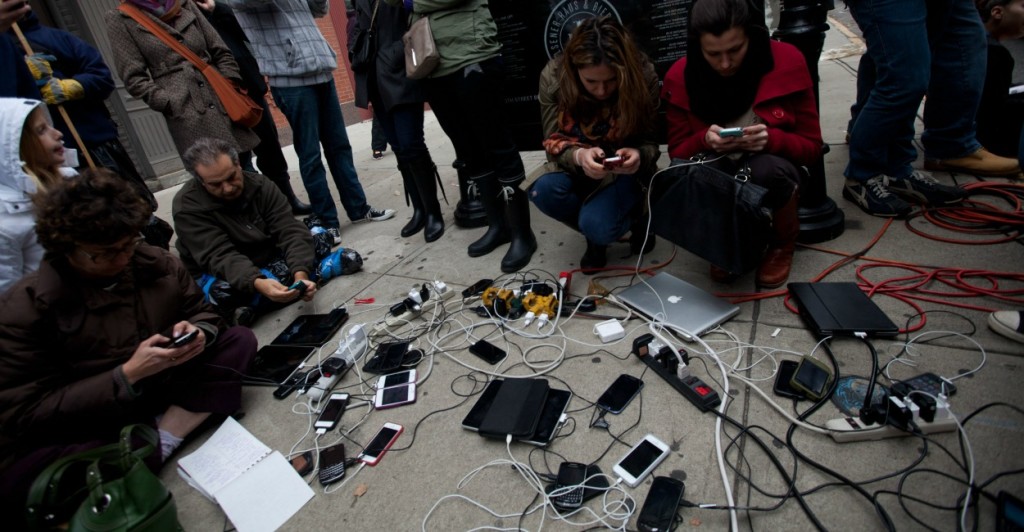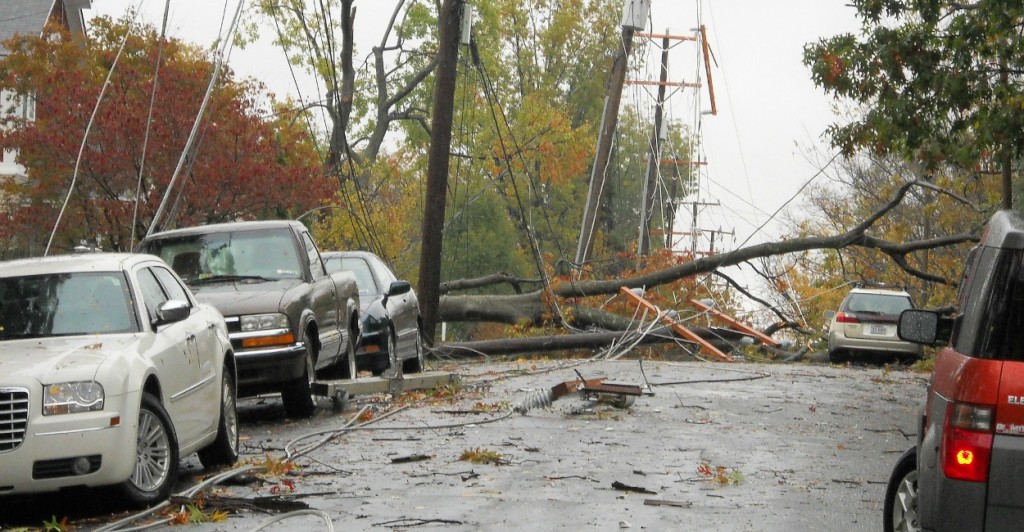5 Steps To Survive Any Hurricane (Including Joaquin)
James Carafano /
The government isn’t very good at disaster response (it’s also slow). In all likelihood, in a major disaster, the feds won’t get there fast enough to save people in their greatest moments of peril. The clock works against them.
When communities found themselves confronting the terrible situation after Hurricane Katrina in 2005, they found it was local communities that provided the most effective response.
“The best job,” argued Rep. Jim McCrery, R-La., was done by “ordinary people who came out of their homes and bought diapers and pillows and blankets and food and stayed at the high school gymnasium or wherever, the civic center in some small town and cooked for the people who were there, who gave them rides to the Social Security office to make sure they got their checks.”
The strength of communities in disasters extends to “virtual” communities as well. A good example is the response of the Vietnamese community in Louisiana.
When it became clear that the city of New Orleans would have to be evacuated, family members and friends alerted communities in the surrounding areas. In turn, they immediately organized efforts to house evacuees.
>>> To Purchase The Full Book – “Surviving the End: A Practical Guide for Everyday Americans in the Age of Terror”
Other members of the Vietnamese community remained in the city, tending to those who couldn’t get out. They also used digital cameras and laptop computers to take pictures and send messages to the evacuees, letting them know what was happening on the inside.
Meanwhile, the communities in Louisiana reached out to the Vietnamese diaspora all over the United States via the Internet—connecting families and collecting aid for victims. That’s the power of family and community.
You too can help build a support network that will be there for you and yours.
Here’s a family emergency communications planning made simple. This guide can tell you how to link up with your family members in a crisis. This will help connect you for everyday emergencies as well as big disasters.
Step 1: Collect all the contact information for family, friends, and neighbors that you need to link your human web together, as well as critical places you might need to contact in an emergency, like schools, daycare, church, etc. Make sure all the tools for connecting them, including land line numbers, cell phones, Twitter handles, Facebook friends, and so on, are listed in your contacts, too.
You want to make your contact list before the disaster.
If you wait for the crisis to come, likely as not you’ll waste a lot of precious time and effort scrambling to figure it all out at a time when you don’t have a lot of time to waste.
Our digital devices help. Most of them have applications that already store this information for us. Here is an idea, though. Go ahead and print all the information out.
You never can tell when the power might go out or the batteries run down. Put the lists in the places you might need them—home, the office, the car, and so on.

New Jersey residents without power after Hurricane Sandy charging electrical devices from a “charging station” (Photo: Allan Tannenbaum/Polaris/Newscom)
Step 2: This is where the planning part of emergency communications planning comes in. Don’t plan on calling everyone yourself. Make use of your human web. You want to use a call chain, also called a phone tree.
It’s a faster way to spread information—and you can connect with exponentially more people. Say you call two people on your list. They each call two people and so on.
The word spreads fast. Why can’t you just blast email everyone?
You can. But everyone doesn’t always read their email. Sometimes emails don’t get through or are delayed. In an emergency you want to send critical information on several routes—call, text, email—in the hopes that the message gets through.
Here is where you might have to do a little extra work.
There may be family members who don’t know how to email or text or tweet or friend someone on Facebook or snap out a snappy picture on Snapchat. Make them learn. In a disaster, it may save their lives.
Worst-case, they may learn how to communicate regularly with their grandkids. Also, remember, no plan works out exactly as planned. Call chains are no different. Somebody is going to have a dead phone or even worse—he or she might be dead.
If you can’t reach the person you are supposed to call, go to the next level of the “tree” and call them. This way the chain remains unbroken.
The last person on the call tree calls the first person. Closing the loop lets the person that initiated the plan know that the web has been alerted.
It is just that simple. Your list ought to include an out-of-town contact, a friend or relative, someone everyone knows. Sometimes, during a local emergency, it is easier to make a long-distance call. Local networks might be swamped with everyone trying to call everyone else nearby.
The out-of-town contact, on the other hand, could serve as a clearinghouse for folks in your web trying to contact or pass messages to one another.
Step 3: What happens when the cell towers are out, the phones lines are down, Twitter is overloaded, or your Internet access is shot? That’s where Plan B in your emergency communications plan comes into play.
Designate a meeting point (the military loves to call it the “rallying point,” which sounds much cooler),where family members can gather or leave messages for one another.
Step 4: You have to have reason to communicate. Of course, you want to make sure everyone you care about is safe. But what is most crucial is that you are sharing information, making sure everyone has the critical knowledge that they need to keep them protected.
So part of your plan has to be a way to get reliable information to share.
You can, of course, look for emergency broadcasts on the radio and television (or, ugh, try to glean something useful from broadcast news)—but that is so 20th-century.
Almost every state and local community government has an application (an “app”) for digital devices (like cell phones, desktop computers, and tablets) that provides updated emergency information.
I live in Washington, D.C. I don’t think the District government is good for much. But it has a cool app. Our app is called the Homeland Security and Emergency Management Agency Mobile App (HSEMA).
I know, it just trips off the tongue, but it is actually really useful.
It includes current weather, calendars with major events (like marathons and festivals), local mass transit information, and alerts about road closures, as well as emergency evacuation routes that lead you out of the District, city emergency text alerts, emergency help line numbers, and a list of shelters that are opened after a disaster occurs.
If a crisis does happen, my app will automatically shoot me emergency information. How cool is that? Even if a crisis never happens, it’s handy to have an app to know whether it’s better to take the bus or the metro in the morning and whether you need an umbrella or a sweater.
Get your app. Use your app. Become one with your app. It will make navigating the everyday world a little easier.
Step 5: Practice your plan. Use it not just because you are getting ready for the big disaster that may never happen, but because every time you meet at your rally point or activate your calling tree, you are strengthening your human web. Getting everyone to walk to your rally point is a great way to get some exercise and quality family time on a Sunday afternoon.
When you have family news—births, deaths, illness, graduation and so on—spread the news through your communications plan.
Use the call chain to pass on prayer requests. Everybody needs a good prayer now and then.
This is adapted from Surviving the End: A Practical Guide for Everyday Americans in the Age of Terror and a possible topic for the 2016 South by Southwest (SXSW) conference in Austin, Texas.

